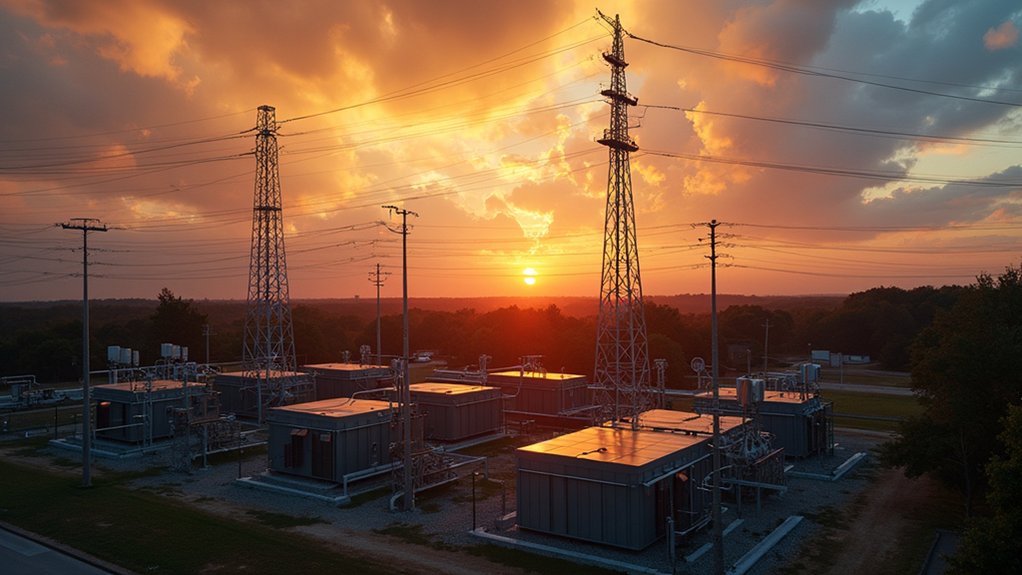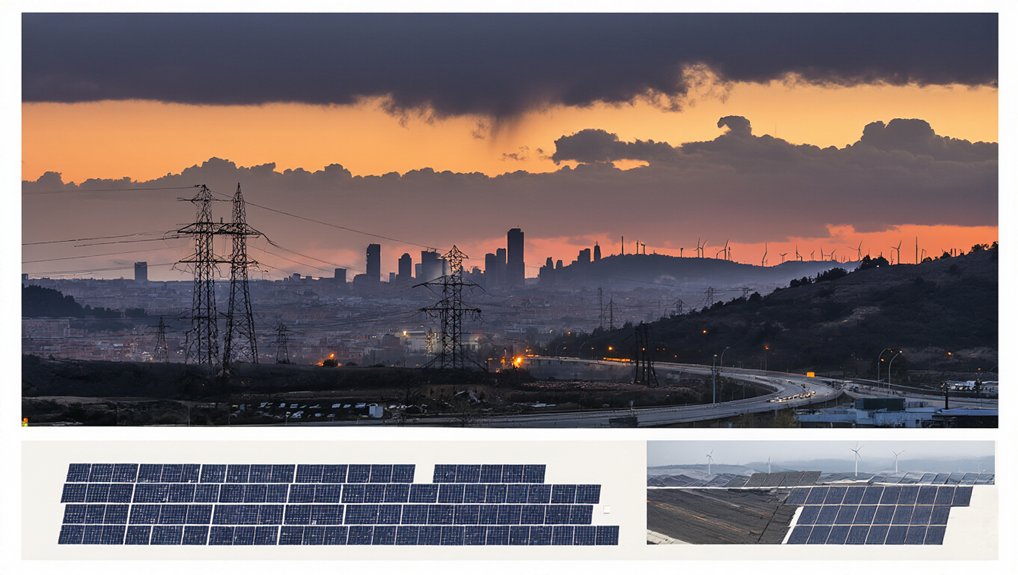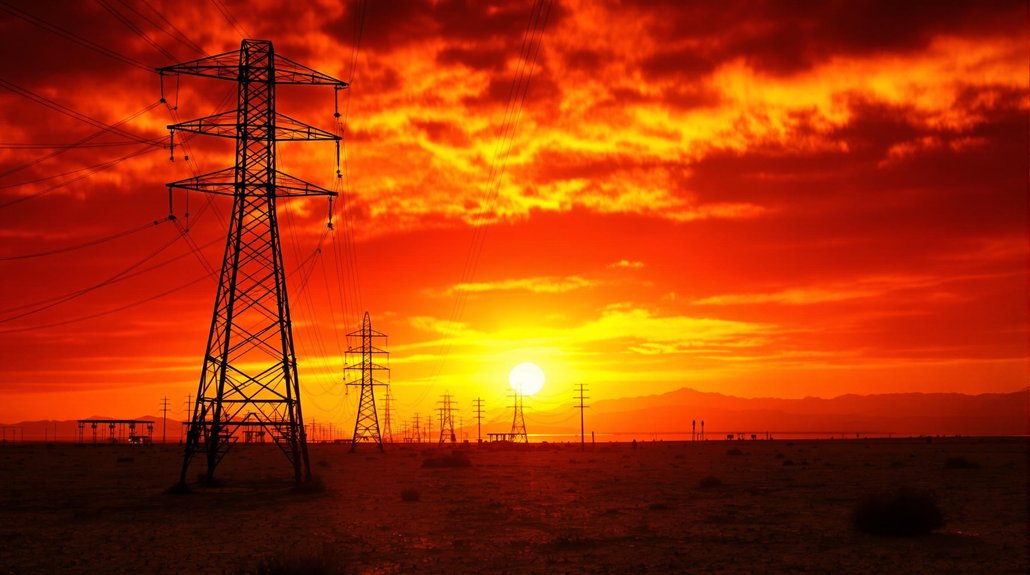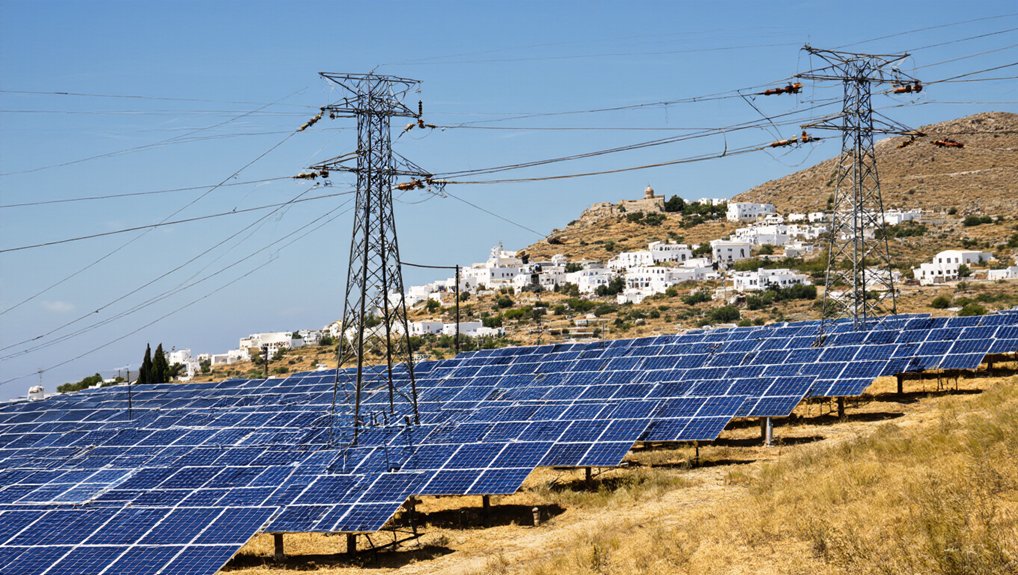As the Southeast faces surging electricity demands, a massive $76 billion transformation is transforming the region’s power grid. This investment aims to modernize aging infrastructure while preparing for a projected 30% rise in electricity consumption by 2040.
The region has already launched 77 energy storage projects and 35 smart grid initiatives in the second quarter of 2025 alone.
Federal support is powering this change, with the Department of Energy awarding $10.5 billion in grants for grid modernization projects. The Bipartisan Infrastructure Law has helped add 7.1 gigawatts of new capacity and nearly 1,000 miles of power lines across the Southeast.
Solar energy is growing rapidly, with U.S. generation expected to rise 31% in 2025. This growth will push solar past hydroelectric output for the first time nationally, changing how the Southeast produces power.
The new Southern Spirit Transmission project, a $360 million high-voltage direct current link, will enable 3,000 megawatts of renewable energy to flow between Texas and the Southeast. The 320-mile, 525 kV HVDC line will significantly enhance regional energy resilience while connecting ERCOT with the Southeastern grid.
Aging hydroelectric plants are getting much-needed upgrades too. Federal incentives worth $430 million target efficiency improvements at facilities like Santee Cooper. These enhanced hydro plants will support grid stability and help manage peak demand times.
Smart grid technologies are central to this transformation. New AI-enabled sensors and advanced meters provide detailed data about energy use. Dynamic line ratings improve transmission capacity, while looped transmission systems boost storm resilience.
Recent hurricanes Milton and Helene highlighted the need for these improvements. Duke Energy demonstrated the value of modern systems by restoring power to 1.1 million customers within 48 hours after these storms. Weather forecasting capabilities are being enhanced to mitigate the impacts of extreme conditions on renewable energy production, as weather pattern analysis becomes essential for grid reliability.
The Southeast’s transmission system is expected to double in size by 2050, with connections between regions growing up to 3.5 times. This expansion will help manage demand surges, integrate renewable energy, and improve reliability as the region faces more extreme weather and rising electricity needs.
States across the region are implementing performance-based regulation to ensure utilities prioritize grid resilience and clean energy integration.
References
- https://www.ainvest.com/news/renewable-energy-grid-modernization-southeast-strategic-infrastructure-investment-hydro-grid-expansion-meet-growing-demand-decarbonization-goals-2508/
- https://pv-magazine-usa.com/2025/07/28/states-see-widespread-policy-efforts-to-overcome-grid-issues/
- https://switchgear-magazine.com/tm-news/business/grid-infrastructure-faces-the-future-plans-for-2025/
- https://eepower.com/tech-insights/3-ways-the-grid-will-get-smarter-in-2025/
- https://nccleantech.ncsu.edu/2025/07/23/the-50-states-of-grid-modernization-q2-2025-states-pursue-rules-for-microgrid-deployment-and-storage-procurement-in-q2-2025/









